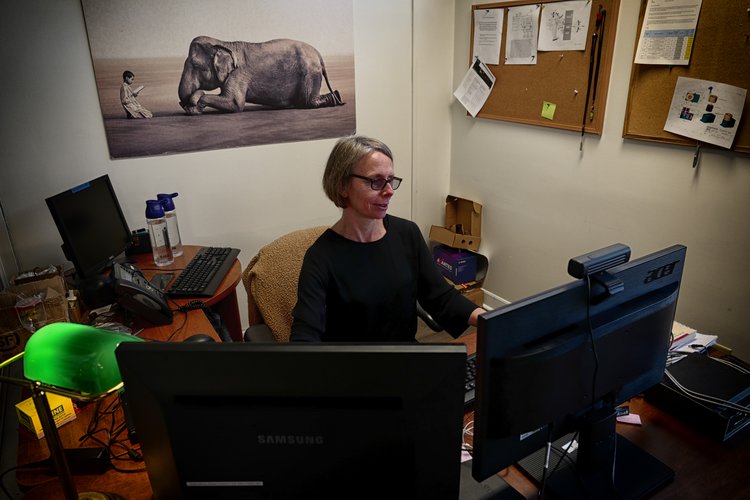Olis Clarity Fundamentals Explained
Wiki Article
The 10-Minute Rule for Olis Clarity
Whichever wavelength selector is used in the spectrophotometer, the light after that passes through an example. For all evaluations, determining a reference example, typically referred to as the "blank example", such as a cuvette filled with a comparable solvent used to prepare the sample, is vital. If a liquid buffered service having the sample is utilized for dimensions, then the liquid buffered solution without the material of rate of interest is used as the recommendation.

The recommendation sample signal is then later made use of automatically by the instrument to aid obtain truth absorbance values of the analytes (https://parkbench.com/directory/olis-clarity). It is very important to be familiar with the materials and conditions made use of in UVVis spectroscopy experiments - UV/Vis. For example, most of plastic cuvettes are unacceptable for UV absorption research studies because plastic normally absorbs UV light.
Quartz sample owners are required for UV assessment since quartz is clear to the majority of UV light. Air may also be considered a filter due to the fact that wavelengths of light shorter than around 200 nm are soaked up by molecular oxygen in the air. A special and much more pricey arrangement is required for measurements with wavelengths much shorter than 200 nm, typically entailing an optical system filled with pure argon gas.
What Does Olis Clarity Do?
After the light has actually passed through the sample, a detector is used to convert the light right into a legible electronic signal. A photoelectric finish expels negatively billed electrons when subjected to light.
The fraction I split by Io is additionally called transmittance (T), which shares just how much light has actually passed through an example. Beer, Lambert's law is often applied to get the focus of the sample (c) after gauging the absorbance (A) when the molar absorptivity () and the course length (L) are known.
The term optical thickness (OD) is often improperly used mutually with absorbance. OD and absorbance both gauge the amount of light strength lost in an optical element, but OD takes into factor to consider loss from light spreading whereas absorbance does not. If extremely little light scattering is existing in a measurement, after that OD might be approximated directly using absorbance and Beer, Lambert's regulation might be utilized.
The Best Strategy To Use For Olis Clarity
Cuvettes made for a 1 cm course length are common and are most typical. In some cases, really little sample is offered for examination and shorter path sizes as tiny as 1 mm are needed. https://olisclarity1.start.page. Where quantitation is required, absorbance values ought to be maintained below 1, within the dynamic range of the instrument
With such little light getting to the detector, some UVVis spectrophotometers are not sensitive enough to measure percentages of light dependably. Two easy possible solutions to this problem are to either water down the sample or decrease the course length. As discussed over, videotaping a standard range making use of a "blank" recommendation option is important.
In a real situation, however, the standard range will normally have some really small positive and unfavorable absorbance worths. For ideal practice, these small absorbance values are commonly automatically subtracted from the sample absorbance values for every wavelength of light by the software to obtain truth absorbance values. 1Depending on the function of the evaluation, the building and construction of a calibration contour might be preferable.
Olis Clarity - Questions

Level of sensitivity is the capacity to separate between the small differences in the example focus. Understanding the values ahead of time, if readily available, can aid to figure out the concentrations of the samples needed, especially where examples are restricted or costly.
When repeating the exam of an example, as a whole, a minimum of 3 reproduce trials is common, our website yet a lot more reproduces are needed in certain areas of work (https://moz.com/community/q/user/olisclarity1). A computed amount, such as the focus of an unidentified example, is generally reported as an ordinary with a standard discrepancy. Reproducible results are necessary to make certain specific, top quality dimensions
A reduced deviation or variant suggests a higher degree of precision and reliability. The strategy is nondestructive, enabling the example to be reused or proceed to additional processing or evaluations.
Some Of Olis Clarity
1 Light scattering - Light scattering is frequently brought on by suspended solids in liquid examples, which may trigger serious dimension mistakes. The presence of bubbles in the cuvette or example will certainly scatter light, leading to irreproducible outcomes. Interference from several soaking up species - A sample may, for instance, have multiple sorts of the eco-friendly pigment chlorophyll.
For a correct quantitative analysis, each chemical types need to be separated from the sample and analyzed independently. Geometric considerations - Misaligned positioning of any one of the instrument's elements, specifically the cuvette holding the example, may yield irreproducible and unreliable outcomes. Therefore, it is very important that every element in the tool is straightened in the very same orientation and is placed in the same setting for each dimension.
UVVis has actually discovered itself put on lots of usages and circumstances consisting of however not limited to: Rapidly confirming the purity and concentration of RNA and DNA is one particularly widespread application. spectrophotometers. A recap of the wavelengths made use of in their evaluation and what they suggest are provided in Table 1. When preparing DNA or RNA samples, for example for downstream applications such as sequencing, it is frequently important to verify that there is no contamination of one with the various other, or with healthy protein or chemicals rollovered from the seclusion procedure
Report this wiki page